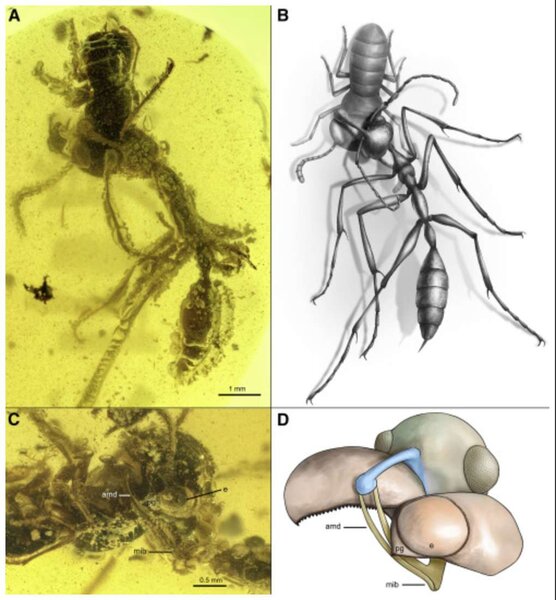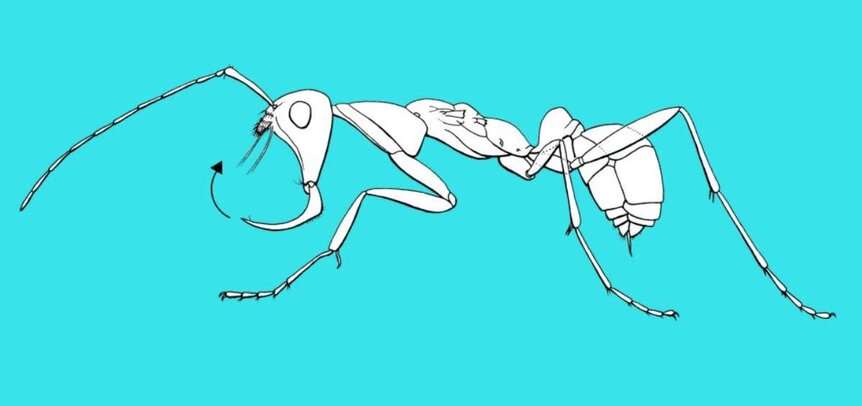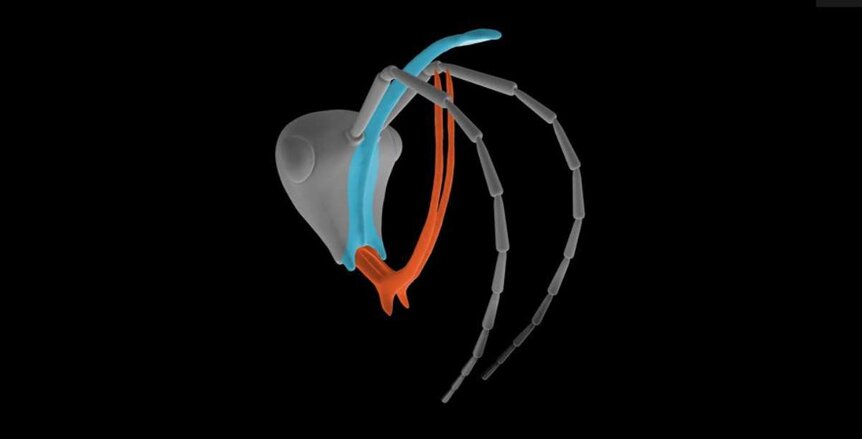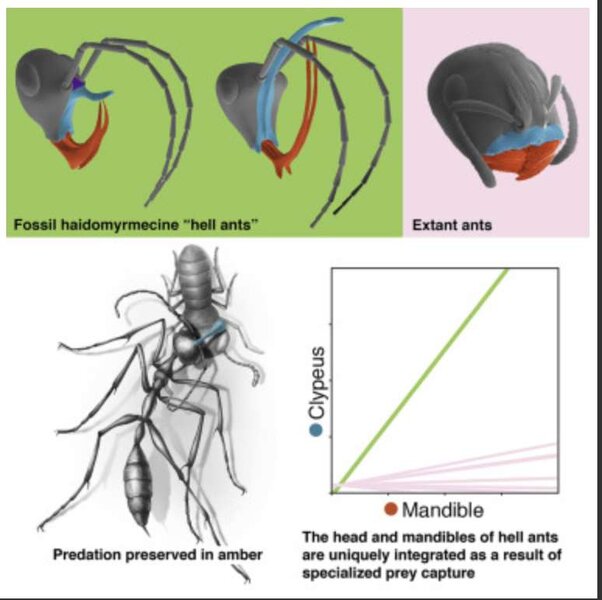Create a free profile to get unlimited access to exclusive videos, sweepstakes, and more!
Cretaceous 'hell ant' snags a baby cockroach in this rare chunk of petrified amber
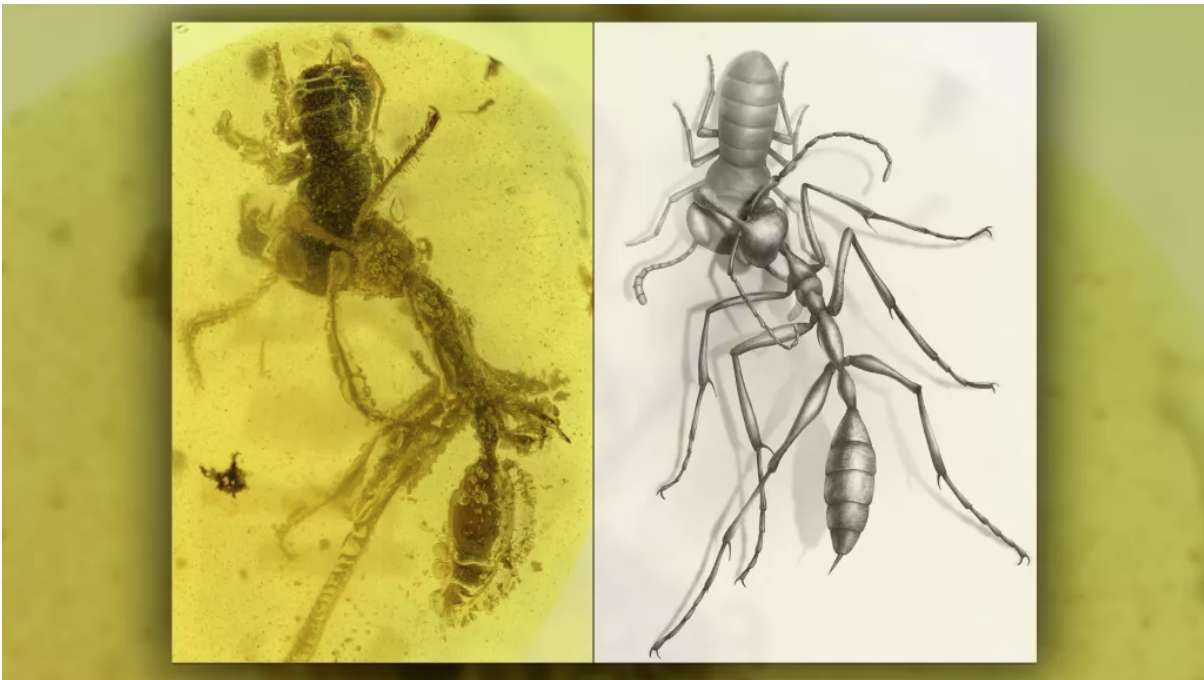
When your official nickname is "hell ant," you have a certain violent reputation to uphold, one dating back over 99 million years.
In a time capsule frozen in an eternal life-or-death struggle, scientists have discovered a preserved piece of petrified amber in Myanmar that reveals the brutal encounter between an ancient hell ant, Ceratomyrmex ellenbergeri, and its restrained prey, an extinct cockroach catalogued as Caputoraptor elegans.
This rare snapshot of a fateful meeting between two prehistoric insects shows how the Cretaceous Period hell ant has subdued its prospective dinner with a set of wicked curved mandibles perfectly suited for restraining the young cockroach. There's no doubt that the doomed juvenile roach got the worst end of this deadly dance before tree sap imprisoned their primeval wrestling match.
According to a new study published this past week in Current Biology, hell ants crawled along the wilds of the Cretaceous some 145.5 million to 65.5 million years ago and have been collected in fertile amber deposits in Myanmar, France, and Canada from the time period of 100 million to 78 million years ago.
This intriguing chunk of amber gave researchers an excellent example of exactly how the fire ant employed its set of vicious jaws in an evolutionary effect they call specialized prey capture. Hell ants are worlds away from modern ants that move their jaws horizontally, and those upward-sweeping mandibles and prominent horn might make you very glad they're long extinct and not rampaging through your relaxing summer picnic.
Evolutionary biologist Prof. Phillip Barden of the New Jersey Institute of Technology and his research team detailed the gruesome hell ant attack in their revealing paper, explaining the initial discovery of hell ants nearly 100 years ago. Scientists have currently identified and cataloged 16 distinct species, most of which sport these intimidating elongated mandibles and horns. It's hypothesized that Ceratomyrmex ellenbergeri represents one of the very first ants to appear on the prehistoric landscape.
"When we first started working on hell ants in 2011 to 2012, it looked like the only way they could have fed was by moving their mouth parts vertically," Barden told Live Science. "At the time, the notion was a little contentious, but this little hell ant showed their hypothesis was correct."
This hungry hell ant was stopped from devouring the young roach before the oozing tree sap interfered, but Barden suggests what might have happened had the scene not been halted by nature.
"First thing would probably be that the ant would have stung the prey to paralyze it," he explained. "We originally thought that all the hell ants would have pierced their prey and drunk the hemolymph, which is like insect blood. However, while some hell ant species have horns that are reinforced for piercing, Ceratomyrmex's horn was holding the nymph in place but not piercing it."
Linguamyrmex vladi, aka “Vlad the Impaler,” is another type of hell ant first identified by Barden and colleagues three years ago. It was thought to have deployed a reinforced horn on its head to impale its meals, possibly utilized to feed on the hemolymph of other insects.
“Since the first hell ant was unearthed about a hundred years ago, it’s been a mystery as to why these extinct animals are so distinct from the ants we have today,” Barden added. “This fossil reveals the mechanism behind what we might call an ‘evolutionary experiment,’ and although we see numerous such experiments in the fossil record, we often don’t have a clear picture of the evolutionary pathway that led to them.
“Over 99% of all species that have ever lived have gone extinct. As our planet undergoes its sixth mass extinction event, it’s important that we work to understand extinct diversity and what might allow certain lineages to persist while others drop out. I think fossil insects are a reminder that even something as ubiquitous and familiar as ants have undergone extinction.”
